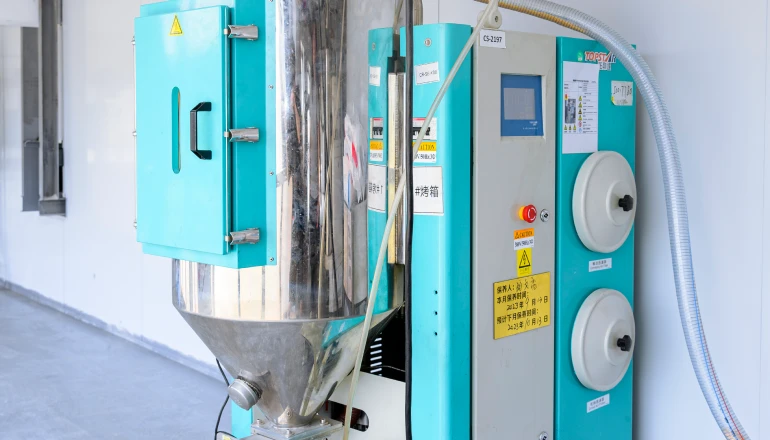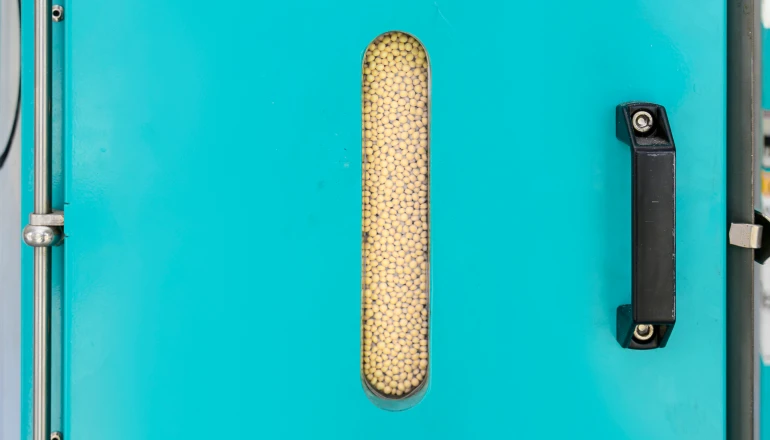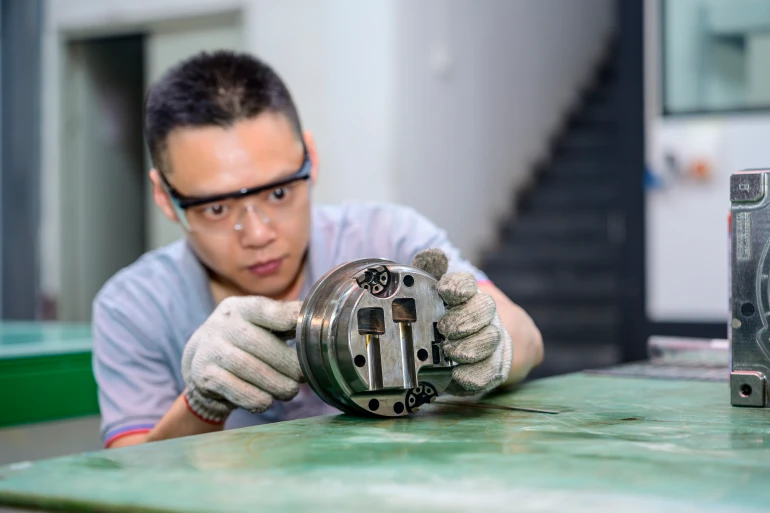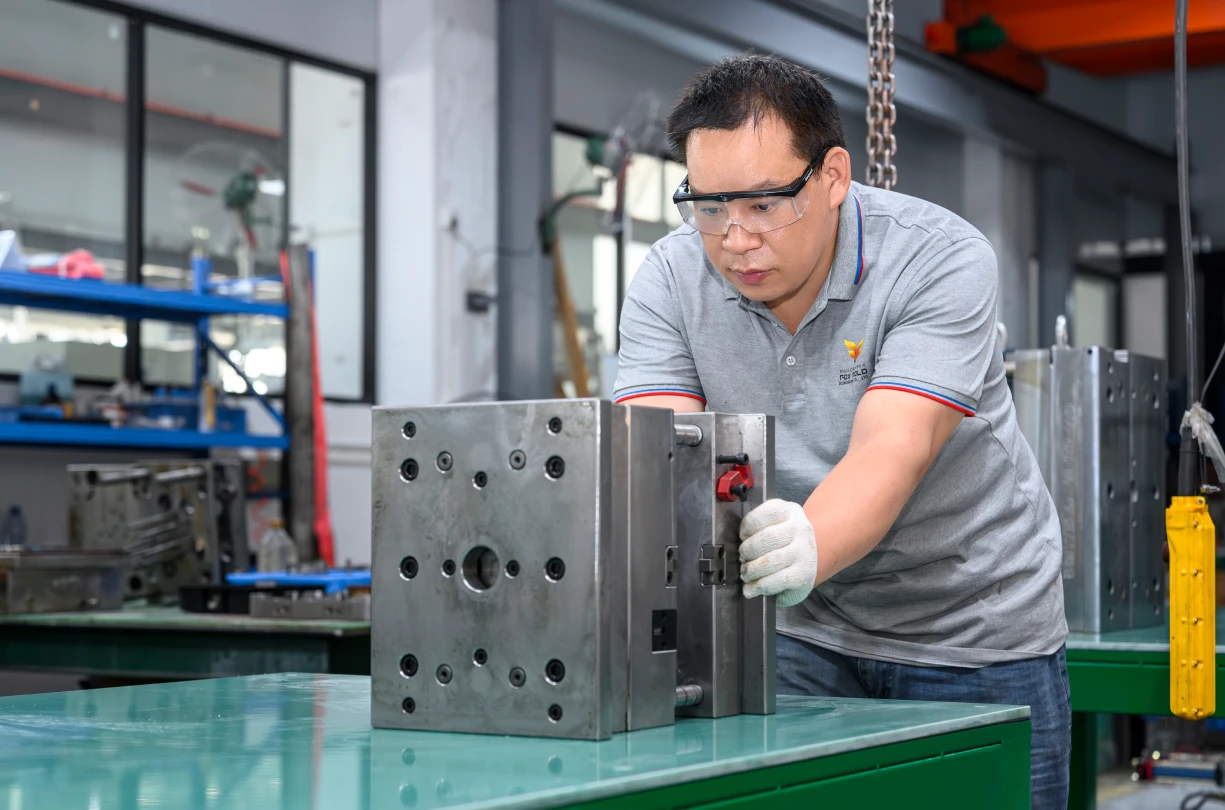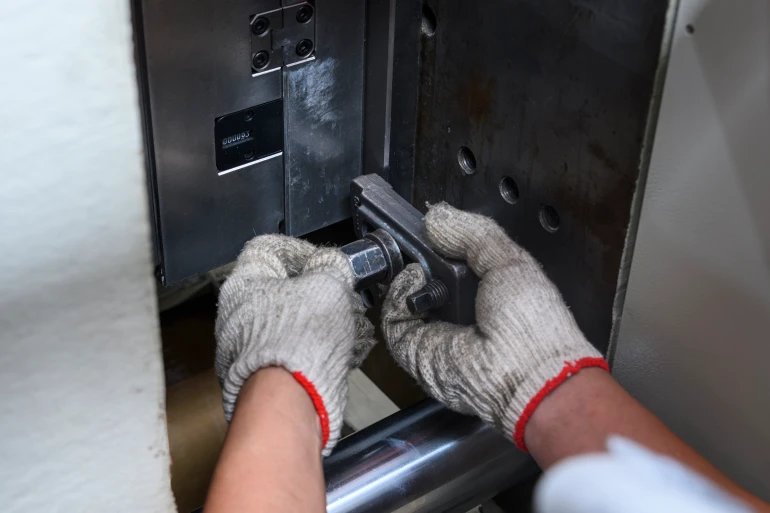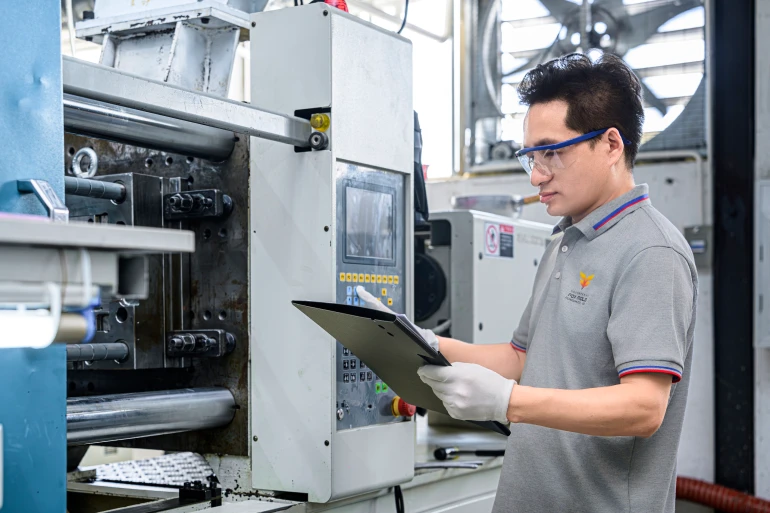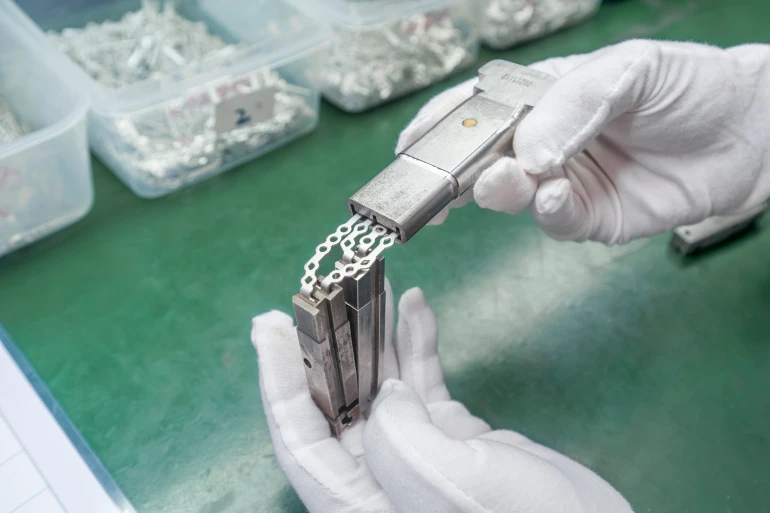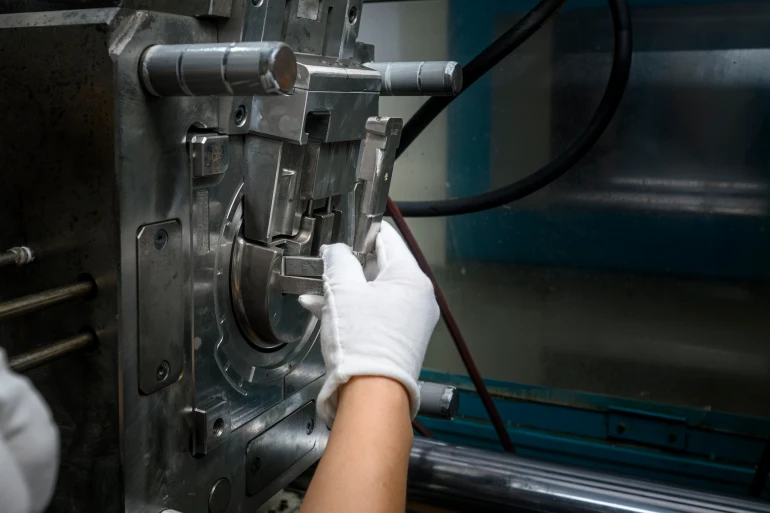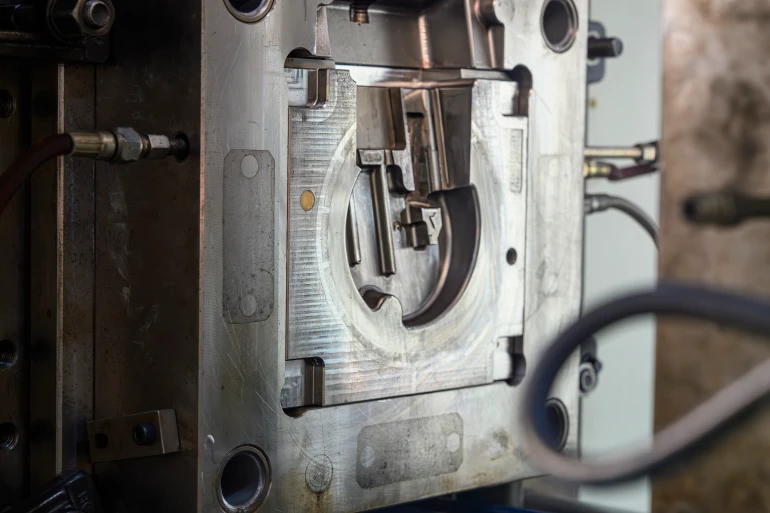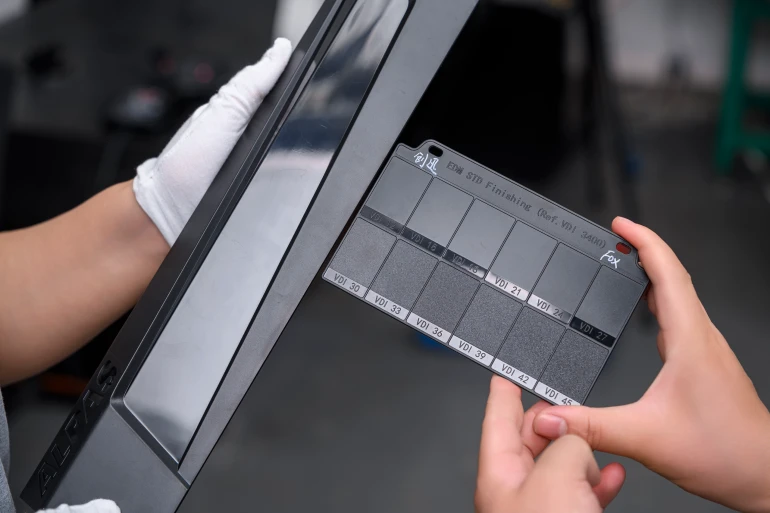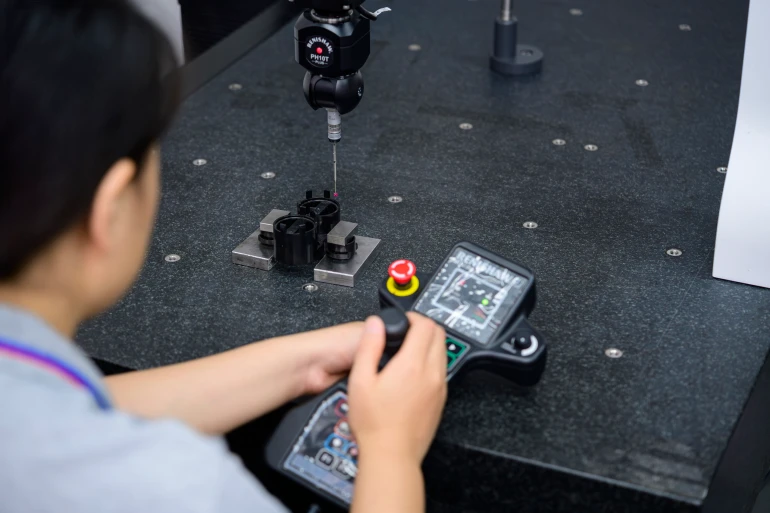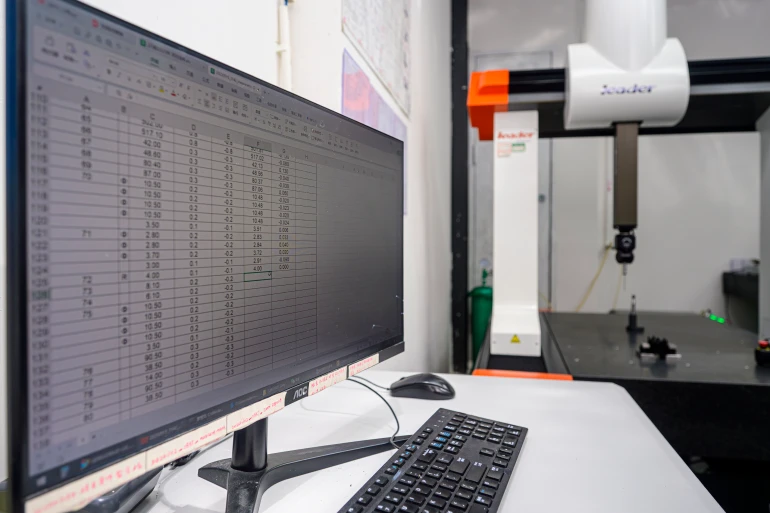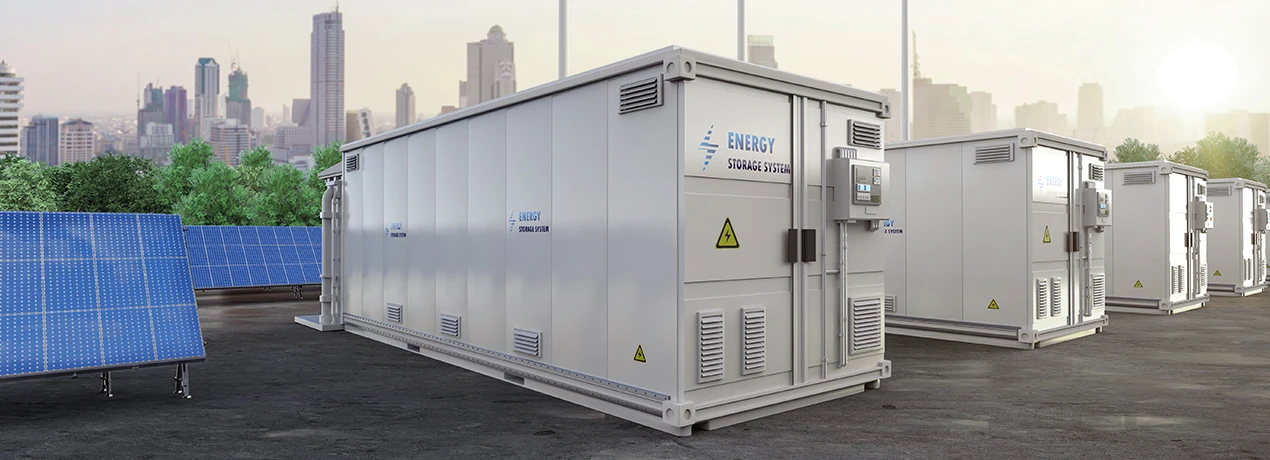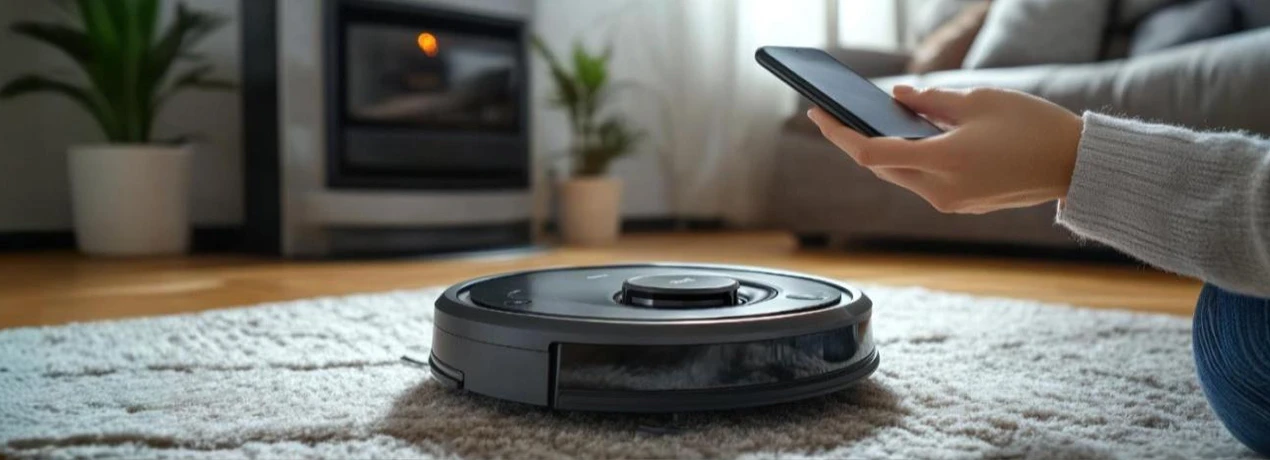- Home
- Metal Insert Injection Molding
Fox mold
Precision Metal Insert Injection Molding Manufacturer
For over a decade, Fox Mold has been the leading manufacturer of metal insert injection molded parts for industries across the globe. From design to sampling and full-scale production, rely on our years of expertise to deliver according to your standards. Along with our manufacturing capabilities, we also assist clients through robust customization and various services.
- Seamless bond and ideal for high-performance parts manufacturing
- +/-0.001MM Tolerance
- Fast turnaround time of up to 2 weeks
- MOQ from 1 piece
- Certification: ISO 9001: 2015; ISO 14001: 2015;
/ Services /
Our One-Stop Services
Fox Mold goes beyond the mold of traditional plastic injection molding manufacturers by offering an array of services.
With our years of production expertise, we can quickly transition from concept to practical samples ideal for testing and small-batch manufacturing.
We help design craft specific tools to streamline the injection molding process, including cooling systems, gates and runners, and ejection mechanisms.
Expert engineers help design and create dedicated molds with tight tolerances and detailed configurations to ensure the accuracy of each injection-molded part.
The cost-effective plastic injection molding process produces highly durable and consistent plastic parts with tight tolerances.
Fox Mold’s overmolding process creates sophisticated plastic parts with multiple layers for added functionality and detail.
Create complex silicone rubber parts with ease using our cutting-edge LSR injection molding process with consistent quality at shorter production times.
How Does It Work
Fox Mold adheres to a strict manufacturing process, ensuring we produce the right injection molded parts according to your needs.
Raw Material Preparation
Using only premium raw materials from top-tier suppliers, we procure the materials and pre-dry them in preparation for melting.
Mold Installation and Mold Trial
After checking the mold, it is attached to the mold machine while properly calibrating the tightness and pressure.
Injection
The metal part is inserted into the mold before pouring the melted plastic to form the plastic component.
Ejection
Once the mold reaches the right temperature and the plastic part has properly cured, the mold is opened to release the formed part. The 1-3° draft angle designed in our molds reduces the risk of damage to the plastic component upon ejection.
Secondary Processing
The gates and excess materials on the formed component are expertly removed during the cleaning process, with the excess recycled for future projects. We then apply secondary processing on the parts, including vibration welding and surface finishing.
Surface Finishing Options
Give your completed plastic parts a better look and feel with surface finishing. We utilize industry-standard SPI and VDI surface finishing treatments to enhance the durability and aesthetic properties of our metal insert plastic parts. Depending on product requirements, we can add a gloss or custom texture to the plastic parts and galvanize the metal inserts.
Plastic Material Options
Fox Mold procures all raw materials from renowned suppliers in the market, like Bayer, Sabic, DuPont, and Chimei, among others. Our plastic material selection includes PVC, PC, PP, PA, POM, ABS, PMMA, PTFE, PPS, HDPE, nylon + glass fiber, and other particles, covering all your needs.
Applications
Check out how we implement metal insert injection molding in crafting plastic parts for various applications.
FAQ
What is Insert Molding?
Insert molding is a plastic injection molding technique that integrates different materials, most commonly plastic and metallic parts, to enhance the functionality and strength of injection molded components. During the process, a pre-manufactured component called an insert is placed into the mold cavity before molten plastic is injected, or poured, into it.
Insert molding produces light plastic parts with optimal mechanical strength for applications like threaded fasteners, gears, and electric sensors for automotive companies; dental and surgical instruments, and medical knobs for healthcare; and digital control panels for consumer electronics.
What is the Difference between Insert Molding and Overmolding?
Insert molding involves integrating a pre-fabricated insert that is most often a ceramic or a metal with plastic. This takes place in a single molding cycle to structurally create a reinforced part. Overmolding, however, entails the addition of a second plastic layer that is usually softer over a pre-manufactured plastic substrate in a multi-shot or multi-step process.
Insert molding focuses on the encapsulation of the functional parts, while overmolding improves certain surface characteristics such as sealing, aesthetics, or grip. One needs to comprehend that each process delivers functional requirements differently.
How does Insert Molding Work?
Insert molding follows the same procedure as conventional plastic injection molding, which involves injecting molten plastic into a mold cavity. The major and only difference with insert molding is the loading of inserts (pre-formed parts) before introducing the molten substance.
The mold cavity is designed to accommodate the inserts at precise locations to avoid structural errors in the finished product. The molds are typically inserted either manually with the use of hands or by automated processes like the use of robots.
After the insert placement, molten plastic is released into the mold at high pressure via the injection unit. Solidification occurs at a set temperature, and the mold is opened to remove the molded part.
Design Considerations for Insert Molding
Here are a few things to consider for insert molding operations:
- Budget: It is important to consider the resources available and the cost implications of your project before selecting a suitable injection molding technique. Aside from the normal injection molding cost, the acquisition of inserts also implies extra cost. The presence of inserts in molded parts increases the price per unit and thus, the overall budget.
- Material Selection: Choosing the best combination of materials is another factor to consider. Select durable materials that bond perfectly to prevent the plastics from cracking around the inserts.
- Mold Design: Ensure that your mold is well-designed to hold inserts in place throughout the process and ensure the even flow of molten plastic.
- Insert Placement: Before finalizing on the mold design and the best position for the inserts, consider the intended application of the insert and the amount of plastic needed to secure it in position.
- Properties of Inserts: The selected inserts must be made from materials capable of withstanding high temperatures and pressure.
What are the advantages and disadvantages of Insert Injection Molding?
The inserts employed in insert-molded parts are made from metal, typically brass or steel. The molding material is usually made of plastics, either thermoset or thermoplastics, depending on the application of the molded part. These plastics are also employed due to their sturdiness or good electrical flow when used in electric applications. Common types include:
- Thermoplastics: Polypropylene (PP), Nylon (PA6/PA66), Acrylonitrile Butadiene Styrene (ABS), polycarbonate (PC), etc.
- Thermosets: Epoxy, Polyester, and Formaldehyde resins.
Elastomers such as natural rubber may also be used.
Design Considerations for Insert Molding
Major advantages of insert molding include:
- Wide application: One of the major advantages of insert molding is its wide applicability in components used across various industries, from consumer electronics to medical and automotive industries.
- Simple Process: Insert injection molding shares the simplicity of the conventional plastic injection molding procedure. This also makes it widely used for various purposes.
- Reduced Assembly Cost: Insert molding is considered a cost-effective manufacturing process because it bypasses post-molding and separate installation parts, lowering or eliminating the cost of part assembly.
Despite its wide applicability and cost-effectiveness, insert injection molding also has its cons, including:
- Increased Mold Cost: The placement of inserts in the mold makes the cost of designing the mold cavity more expensive.
- Increased Cycle Time: The presence of inserts in the mold raises the cooling time and the overall cycle time. Accurate positioning of the inserts also takes time.
- Defects: A lot of product defects are associated with insert injection molding due to the improper placement of inserts before the injection of molten plastic into the mold cavity. Such errors cause production loss.
Common Applications for Insert Molding Parts
Many industries employ tools and equipment crafted with insert molding technique. It is used, for instance in medical devices for surgical instrument handles, diagnostic device components, and catheter tips. In electronics, it creates durable connectors, heat sinks, and switch housings. In the automotive industry, it is used to produce electrical connectors, threaded inserts, and sensors for houses.
It is also not left out in consumer goods like some kitchen utensils, power tool grips, and mounting hardware. When the inserts are embedded well, they improve strength, usability and precision of these devices.
